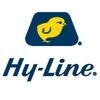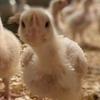Explore all the information on
Poultry behavior
Knowledge of the behaviour of the stock and the application of that knowledge in the care of the stock plays an important part in the maximisation of production efficiency of a poultry production enterprise. In addition, the management of the domestic fowl has received considerable attention over recent years from the community, particularly animal liberation groups, because of the way that commercial poultry management systems have intensified. As a consequence, the study of poultry behaviour is important to the unit manager, not only to ensure that the welfare of the birds and production efficiency are maintained but also to minimise the influence of what is often uninformed debate. Behaviour is the way that animals respond to the different stimuli they encounter in their environment. The stimuli may be from other birds, their environment, people or any other thing or occurrence. Aggression and feather pecking or plucking are the two most common behavioral problems in chickens.
In the rearing aviary, day-old chicks must have easy access to feed and water. The environment should offer an optimal temperature, appropriate lighting, and good ventilation. These conditions ensure that the chicks grow well, and their fluff transforms into well-developed feathers. As the chicks...
Comments : 0
Recommendations: 0
Hens using the outdoor range display better plumage condition suggesting lower incidence of injurious feather pecking (Chielo et al. 2016; Rodriguez-Aurrekoetxea and Estevez 2016). However, ensuring that the majority of the flock utilizes the range has been difficult. Therefore strategies such as range enrichment are required to induce more birds to use the range and encourage natural behaviour. An uncontrolled observational study was conducted in South Australia on two commercial...
Comments : 0
Recommendations: 0
The environment in which a laying hen is reared can have long-term impacts on their behaviour, health and welfare later in life (Janczak and Riber, 2015). Alternative housing systems for layers provide access to larger areas and allow greater expression of behavioural repertoires, leading to positive acceptance by consumers. But the complexities of alternative systems can also place greater physical and behavioural demands on the birds, leading to increases in skeletal injuries or inter-bird...
Comments : 0
Recommendations: 0
I. INTRODUCTION It has been shown that FP occurs in all housing systems, from conventional cages, to barn and free range systems (Green et al., 2000). However, there is a lack of data available on the true prevalence of FP in commercial free-range layer farms in Australia. In a survey in the UK, 65% of flocks showed FP during lay as reported by free-range farmers but, when the same flocks were assessed by researchers, prevalence reached 89% and 69% at 25 weeks, and 73% and 86% at 40...
Comments : 0
Recommendations: 0
I. INTRODUCTION The Australian commercial chicken industry is experiencing major changes; a significant proportion of both meat and layer farm types are becoming free range and this is driven by consumer demand (ACMF 2011; AECL 2015). Amongst industry experts, there is concern the risk of disease introduction and spread in Australian commercial chicken farms will be raised from the increased potential of interactions between wildlife and commercial chickens on free range farms (Scott...
Comments : 0
Recommendations: 0
1. Introduction Welfare assessment in animals has increasingly emphasized the need for objective, non-invasive measures that reliably reflect physiological and psychological states [1–4]. In this context, pupillometry (the measurement of pupil dynamics) has gained traction as a valuable tool, particularly in human psychological and neurological research [5,6]. The pupil’s diameter is known to change in response to a variety of internal and external stimuli, including...
Comments : 0
Recommendations: 0
An observational study conducted on three commercial layer farms showed that environmental enrichment increases number of birds on the range (see Dekoning et al. in this APSS Proceedings). In the same study, we aimed to determine if plumage damage score is different between birds found inside versus outside sheds. The farms were stocked with HyLine Brown flocks (all beak-trimmed); Farm-1 & Farm-3 had one shed each and Farm-2 had two sheds (all 3 farms & four flocks with a fixed...
Comments : 0
Recommendations: 0
Feather pecking is synonymous with economic and major welfare problems in the poultry industry and is positively associated with feather ingestion. In a choice-feeding experiment, laying hens showed a stronger preference for unwashed compared to washed feathers (McKeegan and Savory, 2001). The attraction toward unwashed feathers could be related to the preen oil produced by the uropygial glands located dorsally at the base of the tail. Preen oil covers the feathers during the process of...
Comments : 0
Recommendations: 0
As the global egg industry moves steadily toward cage-free production, ensuring a successful transition from rearing to laying is more critical than ever. Hy-Line pullets raised in environments that prepare them for the complexities of cage-free layer systems are far more likely to meet their full genetic...
Comments : 0
Recommendations: 1
1. Introduction Aggressive behavior of roosters toward hens are rare in natural environments, where the two sexes form separate social hierarchies and male dominance is expressed in a passive manner [1–3]. However, it has been observed that males from broiler parental lines exhibit a high frequency of aggression toward females, especially during the display of sexual behavior [4–13]. This pattern of mating-related aggression has also been observed in slow-growing broiler...
Comments : 0
Recommendations: 0


Lost in the Market Uncertainty Caused by the Outbreak
Suggested link
The ancestor of the modern-day chicken, the red jungle fowl, was exposed to different spectra of light in their natural habitat (Prescott et al., 2003). The surrounding environment, vegetation, season, and time of day all affect the color of light exposure to the wild bird (Endler, 1993), which may have lingering behavioral...
Comments : 1
Recommendations: 0
Heat stress is a huge problem in farm animals, as their welfare and performance can be negatively affected by extreme environmental conditions. When animals are exposed to very high or low temperatures outside their comfort range, they might experience heat stress. This can bring about various unfavorable consequences, such as decreased food intake, reduced zootechnical performance, alterations in the immune system, and increased susceptibility to diseases. Mechanisms through which...
Comments : 5
Recommendations: 3
Walking on eggshells - assessing anxiety in chickens Extension collaborative for the poultry industry -Attention bias...
Comments : 0
Recommendations: 0
Introduction Animal welfare pertains to the quality of life of an animal, denoting the cumulative positive and negative experiences of an animal 1 . The welfare of farmed animals impacts their development and productivity, shaping both...
Comments : 0
Recommendations: 1
Enrichment is the process of improving the environment of an animal, to meet their behavioral needs and ultimately improve their welfare. Enrichment helps to reduce stress and improve welfare by providing physical and mental stimulation, encouraging highly-motivated species specific behaviors, allowing the animal more control over their...
Comments : 0
Recommendations: 0
This issue will cover: -What are behavioral needs? -What is dustbathing? -Dustbathing in commercial housing systems Substrate...
Comments : 0
Recommendations: 0
In this issue: Introduction to the gut microbiome The function of prominent bacterial phyla Introduction to the gut-brain axis How microbial imbalance affects poultry welfare Practical strategies to improve the gut health of poultry What is the gut...
Comments : 0
Recommendations: 0
Each summer, soaring temperatures present a significant challenge for the poultry industry worldwide. Poultry are particularly vulnerable to heat stress due to their limited ability to regulate body temperature, making them highly susceptible to environmental heat. While the immediate...
Comments : 0
Recommendations: 1


Broiler trial in the Netherlands confirms 2018 EFSA scientific opinion on methionine sources while validating the experimental approach
Suggested link
Naturally brooded domestic chicks spend a large proportion of time resting under and gaining warmth from their mother, spending multiple short bouts in relative darkness (Shimmura et al., 2010). In contrast, during rearing, commercial chicks experience one continuous light period each day. In this situation, behaviours become unsynchronised, with the potential for active chicks to disturb and direct feather pecks towards resting conspecifics (Riber et al., 2007; Gilani et al., 2012)....
Comments : 0
Recommendations: 0






.jpg&w=3840&q=75)










.jpg&w=3840&q=75)
.jpg&w=3840&q=75)











